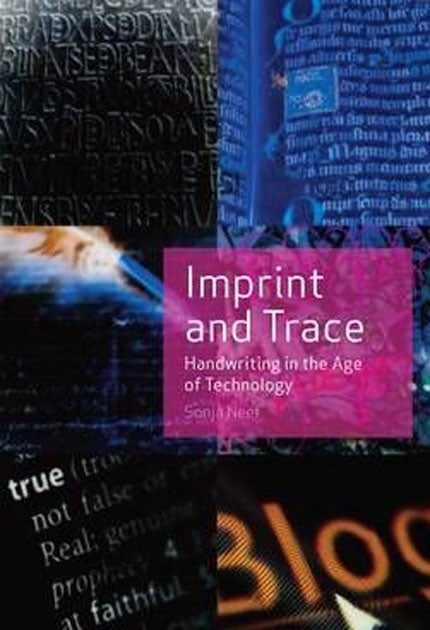Imprint and Trace: handwriting in the age of technology, By Sonja Neef
Language lesson with text appeal

Your support helps us to tell the story
From reproductive rights to climate change to Big Tech, The Independent is on the ground when the story is developing. Whether it's investigating the financials of Elon Musk's pro-Trump PAC or producing our latest documentary, 'The A Word', which shines a light on the American women fighting for reproductive rights, we know how important it is to parse out the facts from the messaging.
At such a critical moment in US history, we need reporters on the ground. Your donation allows us to keep sending journalists to speak to both sides of the story.
The Independent is trusted by Americans across the entire political spectrum. And unlike many other quality news outlets, we choose not to lock Americans out of our reporting and analysis with paywalls. We believe quality journalism should be available to everyone, paid for by those who can afford it.
Your support makes all the difference.First published in Germany, Imprint and Trace has been translated but not necessarily into English. Some of it is translated into italics. To begin by letting the author have the last word or words: "archiviolitic pneuma" is the less than comprehensible expression with which the book ends, an example of Sonja Neef's use of italics when one difficult word is qualified by another. Sometimes italics make easy words, or even bits of easy words, look difficult: we have "the return of writing", which itself returns as "the return of writing" and then, to stress the essential "coming-backness" "the return of handwriting". Then there's "hand writing", presumably to differentiate it from the sort where the pen is held by the toes or clenched between the buttocks.
The very first page, which hymns the letter "a", alerts the reader to the academic absurdities to come. A bold capital A is dropped in every so often, as in "Semitic immigrAnt workers". It may not help that Neef's every second word is "Jacques" and every third word is "Derrida". Every first and fourth word is jargon. This mechanistic typewriting fails to do justice to the subject of handwriting, which is personal, individual, revealing and, sometimes, beautiful.
Concealed within this cultural studies-speak is material that is indeed fascinating, particularly to a generation that confines much of its handwriting to Post-it notes stuck on computers. Medieval monks copying out manuscripts claimed that Titivillus, their "patron demon", used to sit on their shoulders and beguile them to make mistakes. Fountain pens need gravity for ink to flow; Russian cosmonauts used pencils but US spacemen were given ballpoints that handled both weightlessness and temperatures of 200 degrees centigrade.
Jotted down in hiding, Anne Frank's diaries are especially poignant. Hitler's diaries were enormously potent too because they were in the Führer's own fair hand – until it turned out that it was a forger's fair hand and the ink was scarcely dry. Today, computers can reproduce their user's handwriting, except that they make each individual letter exactly the same, whereas real handwriting always has variations.
A reader could cut-and-paste the good parts of this book, let the material speak for itself and write something interesting. By hand, of course. No italics, please.
Join our commenting forum
Join thought-provoking conversations, follow other Independent readers and see their replies
Comments